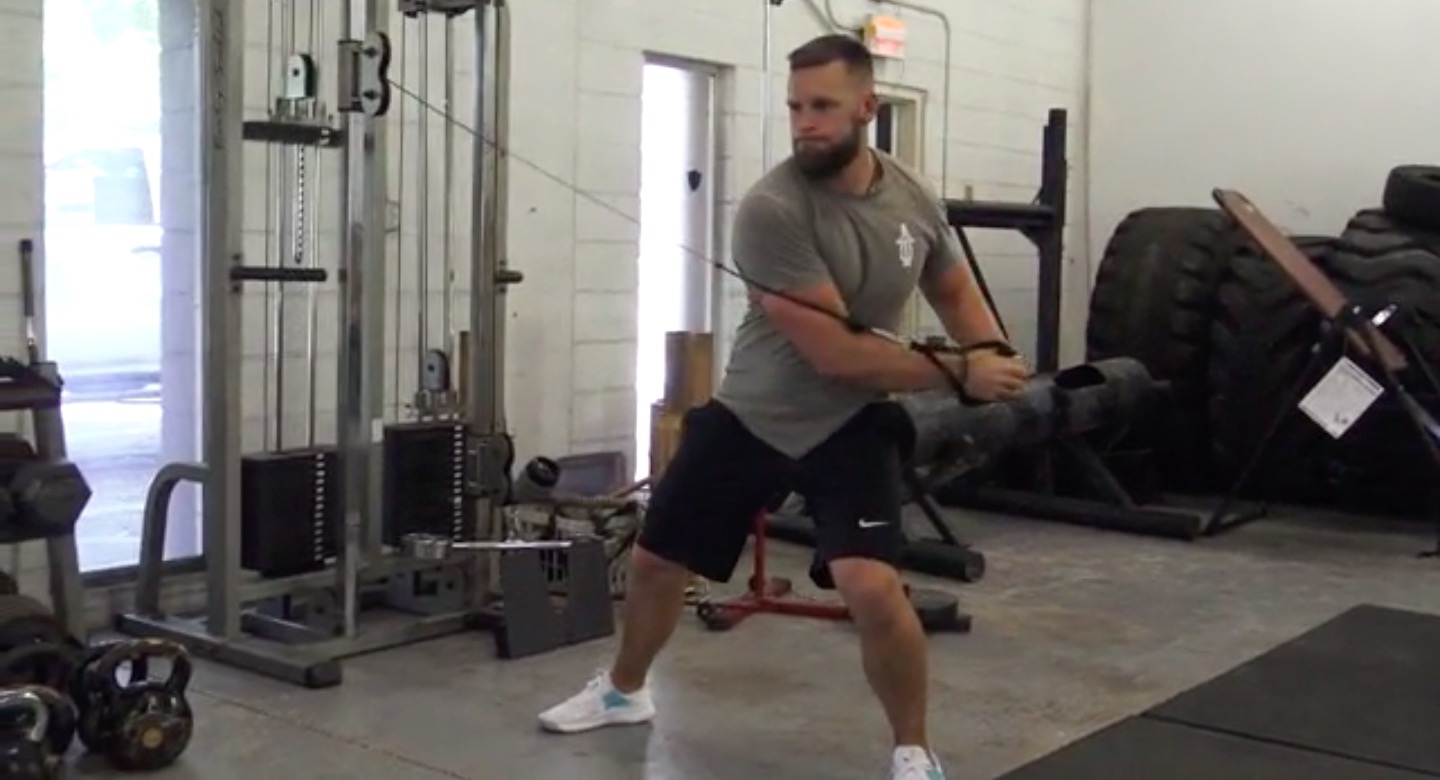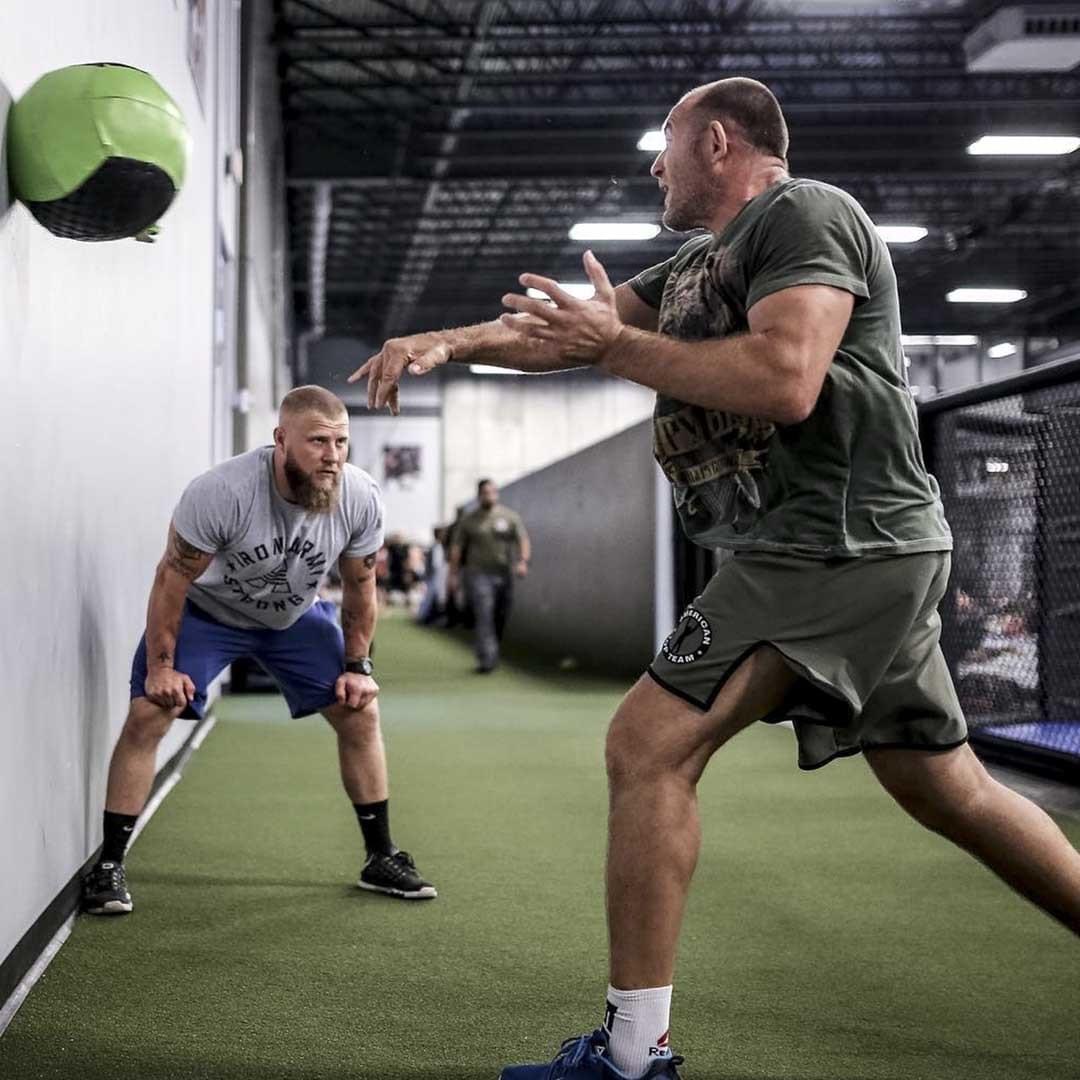We’ve all heard of the importance of core work, but this aspect of training becomes especially important for the competitive athlete. The majority of strength work you do can end up being a huge waste of time if you’re not fully committed to strengthening the muscles of the entire torso and hips. Today I’m bringing you through a few essential core workouts at the gym for athletes to increase speed, power, and jumping ability… let’s get into it.
Core Workouts for Athletes
I recently got a question from someone through my youtube channel asking me for the best core workouts specific to athletic ability… this will depend on a number of factors but here’s a few things to consider:
- What’s your sport?
- What are the movements you predominantly perform during competition?
- What areas are you currently weak in? (not just core but also main lifts, ex: squat)
Training the core for athletic performance doesn’t mean we’re just working on six pack abs or aesthetics… the muscles of the core wrap around the entire trunk (front, back, and sides) acting as a protective sheath for the organs within, as well as providing stability and structure to all movement patterns. The major muscles of the core that are essential to train for athletes are transverse abdominis, multifidus, internal and external obliques, erector spinae, diaphragm, pelvic floor muscles, and (of course) your abs, the rectus abdominis.
The core also includes secondary muscles of the torso which integrates the muscles of the back and chest (particularly lats and intercostal muscles, as well as the hips and even the glutes. If you’re an athlete looking to develop a better core training regimen, check out the following:
Weekly Core Workouts at the Gym
My recommendation is to begin with a strong focus on flexion, extension, and rotation. Note that each of these movement patterns are all referring to the torso which includes the muscles listed above. I’ll give you a couple examples of each movement pattern below, but at a minimum you should be hitting these at least once a week.
Flexion means you are bending or hinging forward at the trunk and focuses on the muscles on the front of the core particularly the rectus abdominis. Extension is the reverse where you’ll bend back, working the erector muscles and rotation obviously means you are twisting with a focus on the obliques and transverse muscles.
FOUNDATIONS
I always like to focus on a solid progression with any athlete no matter what their skill level. By setting a solid foundation first, you’ll be more prepared to progress through your core workouts at the gym with weights eventually. Depending on the athletes needs, I’ll break down training into a more complex and individualized sets.
However during the off-season no matter where we’ve left off, I’m always going to move from stabilization to integration. Here’s an idea of where we’ll start and finish with core training:
Stabilization: (rotation)
The goal of stabilization is to build a strong foundation of strength within the core that allows you to stabilize. This may be an isometric exercise in which you hold the same position for a fixed amount of time. Another example of stabilization is resisting against an object (can be moving or stationary) where you simply oppose force.
- Side plank: to perform a side plank you’ll begin lying on your side, down on the ground. Begin by bringing the bottom elbow just underneath the shoulder with the fingers pointing forward. You should have a 90 degree angle in the arm so it feels strong with all the joints stacked one over the other (you can also do a side plank with the hand on the floor, rather than elbow to make it more challenging). Next stack the legs and feet on top of one another and by engaging the rotational muscles of the core, lift the hip up as high as you can so you’re in one straight line.
- Cable machine (anti-rotation): begin by holding onto a rope or handle attached to a cable machine. Set yourself up laterally to the machine so your side is facing the attachment point of the cable.

Stabilization: (extension)
- Superman hold: Start lying on your front side on the ground. From here you’ll lift the feet and arms off the ground. Reach the arms in front of you overhead so you’re now just balancing on the pelvis. You can perform this movement for repetitions where you lift off the ground or just develop strength through the posterior chain by isometrically lifting and holding your superman position for a given time.
Stabilization: (flexion)
- Kneeling march: Start by kneeling with both legs on a bench. From here you’ll grab a couple small plates (we’re talking between 2.5 – 5lbs). Stay upright through the torso with good posture as if you’re mid-sprint. Engage the core as you begin swinging the arms forward and back. The arms should stay long moving the weights as pendulums. This is great for building stability through the midsection to be able to fight against the twist. Avoid any rotation here.

For more stabilization drills check this out.
INTERGRATION
Integration is a major part of any program for athletes. No matter what part of the body or skill you’re working on, it’s essential to begin with a strong foundation (stabilization) and build from the ground up. Integration is where you begin utilizing that strength in a active way or in other words, integrating the strength you’ve developed into an athletic movement. Here’s a few examples below
Another way you can integrate is by utilizing a more sport specific movement. This challenges the athlete to integrate the lower and upper body together to produce one powerful movement. This will of course be specific to you and your sport but here’s a few more examples of ways you can integrate athletic movement into your core workout at the gym.
Integration: (rotation)
- Lateral med ball toss: To work the rotational muscles of the core, try a lateral med ball toss. Begin standing laterally to the wall with the med ball in your hands. Rotate the med ball over to the side not close to the wall, bending into the knees a bit and getting into an athletic stance. Keeping the arms somewhat long, you’ll rotate towards the wall quickly and powerfully. Release the med ball as you finally turn to slam it against the wall.

- Landmine rotation: Here you can be in a standing or even half kneeling position to begin. Find the appropriate distance to stand from the landmine barbell and using the support of your lower body, you’ll rotate the bar from one side of your body to the other for one repetition. You can watch exactly how to do this movement here.
Integration: (flexion)
- Med ball sit up toss: This is a great drill to work on throwing power for either baseball or soccer players. Start seated on the floor facing a wall with the med ball in your hands. Sit all the way back so you’re now lying on the floor with the feet close to the hips and knees pointing at the ceiling. Bring the med ball back behind you with straight arms. As you sit up, simultaneously carry the med ball with you and follow through to toss it at the wall.
Integration: (extension)
- Stability ball back extension: start by lying on a stability ball secured just under your hips. Bringing your hands behind your head, secure both feet on a wall behind you. You’ll bend forward so your torso rest over the stability ball and then for each rep, lift up and off the ball to slightly extend through the muscles of the posterior chain.
If you want to become the ultimate athlete, it’s essential to develop a strong core so that every movement you make in training and competition comes from a place of power. You need an athletic program that that gives you both foundational strength to develop speed, power, and athleticism.
Enter the Athletic Strength Formula: The powerful formula that pro athletes use for DRAMATIC strength increases on a regular basis. Click the link below for access now:
TRAIN THESE CORE WORKOUTS AT THE GYM
